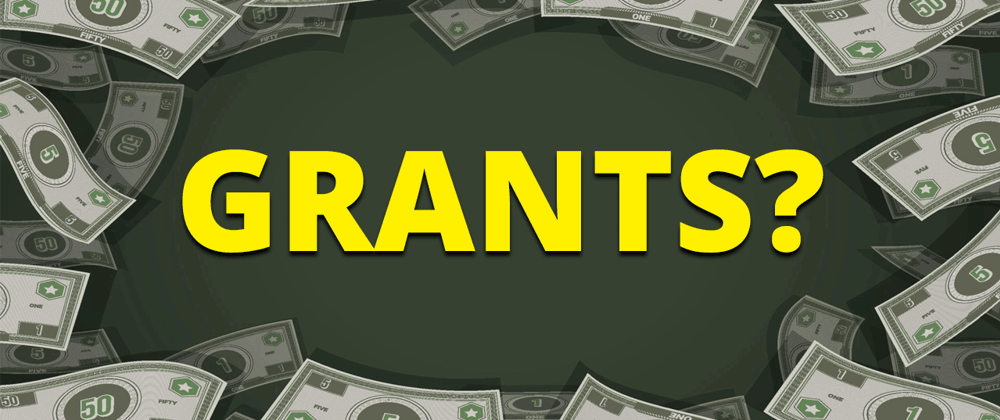I've been investigating, participating, and running grant programs for a while now.
There are a few things that I've learned along the way that I want to share with you.
What is Grant Program?
A grant program is a process that provides a way to fund initiatives that are aligned with the
mission and vision of the organization that is running the grant program.
Grant programs are usually run by companies or foundations that want to support a specific cause,
or have specific goals that they want to achieve. It allows participants to submit proposals
that are aligned with the goals of the grant program, and if the proposal is accepted, the
participant receives funding to work on the project.
Why do Grant Programs exist?
Grant programs are usually run by a company or a foundation that wants to support a specific cause
which is aligned with their mission and vision.
For example, the EOS Network Foundation's Grant Program
is focused on supporting projects that are building on the EOS Network. The alignment with the
foundation's mission and vision is clear, they want to support the EOS Network ecosystem.
Another example is the Web3 Foundation's Grants Program
which is focused on supporting projects that are building on a variety of networks (Polkadot, Kusama, etc.),
but the alignment with the foundation's mission and vision is also clear, they want to support
the Web3 ecosystem.
What does the process look like?
The process of applying for a grant program is usually the same across all grant programs.
- You submit a proposal
- The proposal is reviewed
- The proposal is accepted or rejected
- If accepted, you start working on milestones
There might be some back and forth at step 3, but not always. In a lot of cases you might get rejected with
some feedback, and you can re-submit the proposal with the feedback in mind.
When do you get paid?
This differs between grant programs, but there are generally two ways you get paid.
- You get paid upfront
- You get paid after you complete a milestone
It's important to understand how the grant program you're applying for works.
If you need funding upfront, and don't realize that the grant program pays after you complete a milestone,
you'll be in for a surprise, and possibly suffer reputation damage which will prevent you from ever being
able to complete your proposal, or get further funding from that grant program (and possibly others).
What qualifies for Grant Programs?
Grant programs are open to anyone who wants to participate (within legal requirements). However, there are some
things you need to keep in mind to be able to take advantage of them.
Most grant programs require that the project is open-source, aims to solve a problem that
is aligned with their mission, and has a clear roadmap of milestones and timeline.
The two hidden types of proposals
Okay, here's some alpha for you.
Though this is never talked about or stated on any grant programs, there are two types of proposals.
- The business proposal
- The tech proposal
Both of these types of grants are common, and sometimes there is overlap, but it's important to understand
how evaluators look at these proposals and what they are looking for in each of them.
The business proposal
These kinds of proposals are centered around projects that are focused on building a business. They want to
build a product that will be used by users, and build their own community. These are always crucial for the
success of any grant program, as they are the ones that will bring users to the network, and help it grow.
However, in a lot of cases, these projects do not focus on the business model, and instead focus entirely on features.
This is a mistake, as no grant program wants to become a substitute for a business model. The aim of a grant program
is to help you get started, not to fund your business.
It is crucial that you outline how you will reach self-sufficiency in your proposal.
The tech proposal
These kinds of proposals are centered around proposals that do not benefit from a business model.
For example, a proposal to build a new command-line tool that will help developers build a specific type of application
should not have a business model, as that would negatively impact the adoption of the tool; and the goal of the
grant program is to help the tool get funded and then adopted.
These types of proposals should focus on the technical aspects of the project, and how it will benefit the growth of
the ecosystem, improvement of the network, or other technical aspects.
How to write a winning proposal?
There are a few secrets to writing a winning proposal. Some of them are obvious, and some of them are not.
Follow directions
This one is obvious, but it's not always followed. Actually, it's rarely followed 😂.
If the grant program asks you to submit a proposal in a specific format, do it. There are often automated
tools that will help evaluators review your proposal, and if you don't follow the format, you'll just have to
do the work later on, and you'll be wasting everyone's time. It also reflects poorly on you at the very first stage
of evaluation.
Be clear & specific
I see way too many proposals that are vague. There is no clear roadmap, no clear milestones, and no clear timeline.
These never get accepted.
You want the reader to be able to understand what you're proposing in as little time as possible. If they have to
spend an hour reading your proposal, it often shows that you don't know what you're doing, and you're just trying
to fluff up your proposal.
These aren't whitepapers, they are grant proposals. They should be short, concise, and to the point. You need to
explain the technicals of what you want to accomplish, but you don't need to (for example) dig into the details of
how you will implement a specific feature.
Singular focus
This is a big one. Scatterbrained proposals are much harder to accept, as they are often too ambitious, and don't
make the evaluator feel confident that you will be able to deliver on your promises. You don't want to do
15 things in one proposal, you want to do 1-3 things, and do them well.
You will always have the chance to create a new proposal in the future to add new functionality, but you need to
focus on the core that you want to build for each proposal.
This makes it very easy for the evaluator to understand what you're proposing, and how you will accomplish it.
Be realistic
Look, I know you have big plans, and you want to build the next big thing. But you need to be realistic about what
you can accomplish in the time that you have, and within the parameters of the grant program.
You're not going to build a AAA FPS game in 2 months with a $20k grant. It's just not going to happen.
This is a sure-fire way to get instantly rejected, and that first impression on the evaluators is going to be hard
to shake off.
Thanks for reading!
I hope this was helpful, and I hope you learned something new. If you have any questions, feel free to reach out
to me on Twitter @nsjames_.







Top comments (0)